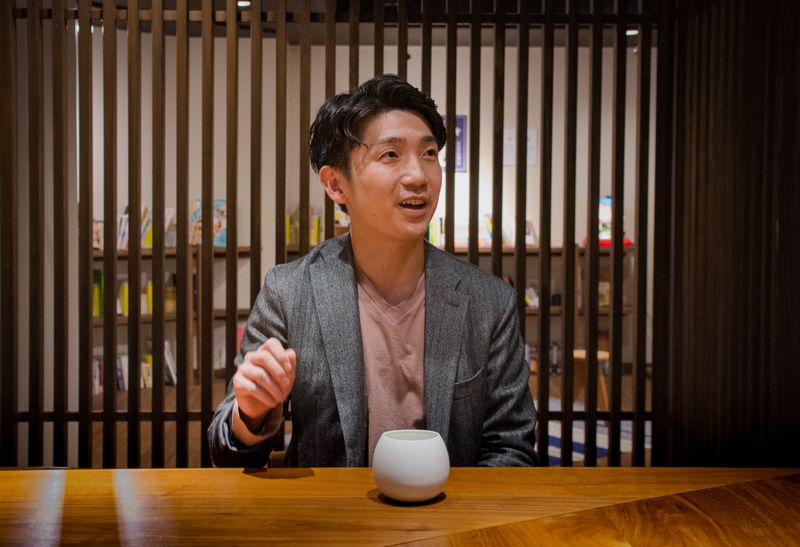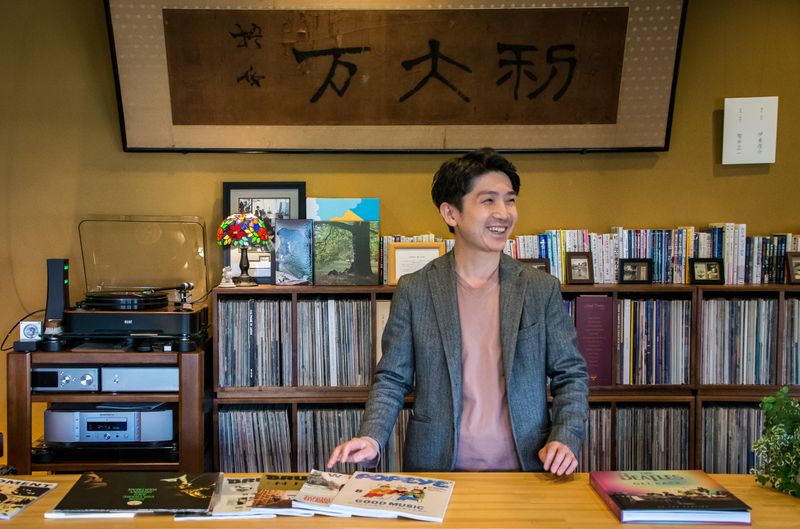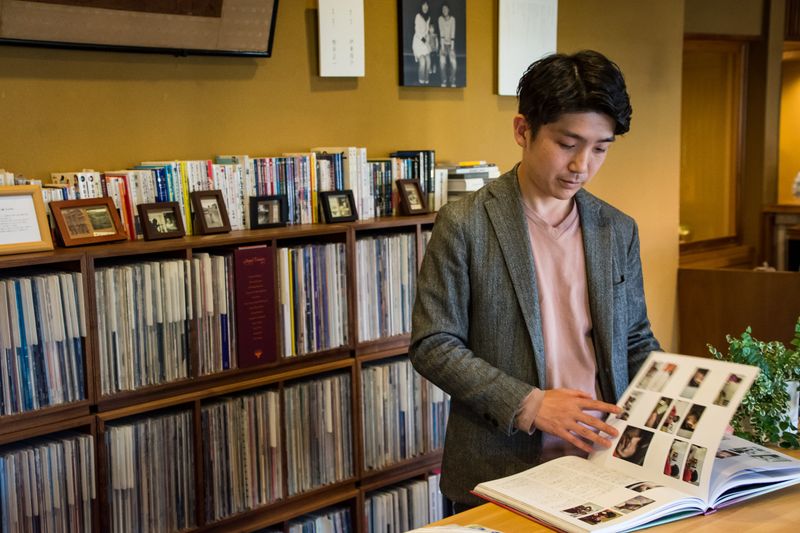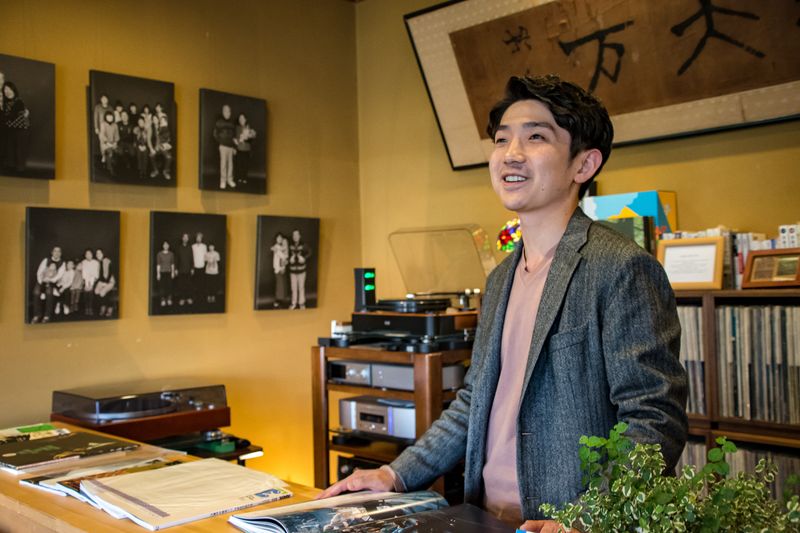Jan 11, 2022
The Ureshino Story: Young hotelier finds strength in local narrative
The city of Ureshino in Saga Prefecture, southwestern Japan, is home to the proud cultures of Ureshino tea, onsen (hot springs) and porcelain. This is the first in a series of articles telling the stories of forward-thinking, local creatives from each of these respective industries who have joined forces to help safeguard the future of Ureshino's cultures.

(Kenta Kitagawa, Ryokan Oomuraya, Ureshino, Saga Prefecture.)
“We have a narrative. There is no choice but to continue developing it. By telling our story, maybe people will want to come and see Ureshino.”
Kenta Kitagawa speaks with the kind of quiet assurance you’d expect of someone well into the final pages of their days, not someone who’s still developing the early chapters of their own story. Perhaps that’s what getting thrown in at the deep end will do to you. For you, courtesy of an unexpected twist in the tale.
At just 25 years of age Kitagawa became the 15th generation successor of his family’s ryokan Oomuraya in the city of Ureshino, in Saga Prefecture, western Japan. In striking contrast to the young man at its helm, Oomuraya was then and is still now the oldest ryokan in town, established in 1830.
If the face of youth isn’t what one might have expected to be the face of an establishment synonymous with housing so many of Japan’s quiet traditions, the visitor to Oomuraya may be even more surprised to find at the ryokan bar a set of DJ turntables and a collection of The Beatles vinyl that could be the envy of even Sir Paul himself.
Born and bred in Ureshino, Kitagawa had initially penned a different narrative for his early adulthood.
“My parents were happy for me to choose my own path. Japan was in the bubble era until about when I was in elementary school. The town was lively at that time. But then as I went through my youth in high school you could see things becoming quieter (after the bubble burst). I could really feel it. Like a lot of people, I felt that I wanted to leave and go to the city,” he said.
After graduating from high school Kitagawa left Ureshino to study media theory and sociology at a university in Tokyo, taking with him a love of music and ambitions to work for a music magazine. With the music industry proving a tough nut to crack, however, he took a part-time job working as a bellboy in a luxury hotel in the capital.
“It opened my eyes to wanting to create a similar hotel,” said Kitagawa of his early experience in the industry.
“Not just a place where people stay but somewhere with people coming and going. Offering experiences through dining, hosting concerts, workshops, weddings.”
After graduation Kitagawa went to work for a company with a department that specialized in the luxury hotel market, cutting his teeth at hotel operations in the onsen towns of Atami and Hakone. This formative experience was cut short though.
“I wanted to stay longer but after the Lehman shock (in 2008) the hotel industry was in danger and there was a need to help preserve those hotels with a long history.”
Including the family ryokan in Ureshino. Kitagawa was called back to take up the reins at Oomuraya.

(Ryokan Oomuraya, Ureshino, Saga Prefecture.)
More than 12 years on from his return home Kitagawa talked with us in Oomuraya’s basement reading and lounge area - a warmly lit, cozy space with books to leaf through (plenty on The Beatles, of course), even a rocking chair to kick back on.
The space is being eyed as a potential spot for workationers to crack open their laptops, perhaps pre-onsen soak. It’s one of a number of initiatives Kitagawa has involved himself, and the family ryokan, with since his return to Ureshino, adding new dimensions to the narrative.
“I think that with local hotels and ryokan there's a feeling among people that unless you're a paying guest, you can't enter. I thought that it would be good if I could create something that felt more open,” he said.
Back in Tokyo a colleague had even suggested that he use space in Oomuraya to host music events. At the time of writing there is live Jazz scheduled for mid-December. (After our interview Kitagawa would joke that he hoped one day to invite Paul McCartney to come and play. Now, if he could book that gig, well, he’d probably need to build another hotel in Ureshino to meet the demand of fans.)


(Kenta Kitagawa, Ryokan Oomuraya, Ureshino, Saga Prefecture.)
Kitagawa is also one of the founding members of Ureshino Chadoki, a project bringing together creative minds from Ureshino’s cherished traditions of onsen, tea and porcelain.
“Chadoki was a project that just happened to come about but in terms of Ureshino’s ryokan, its tea, its porcelain, it has a really important meaning, to pass these cultures onto the next generations. We’ve been working together for the last few years, trying different things through trial and error.”
The young leader values the group as allowing members to share ideas for the greater good in what he describes as an “open source” medium. It’s a departure from the typically guarded worlds of Japan’s traditional craft industries where techniques and knowhow have tended to make a linear journey through generations of the same family, rather than be spread further and wider.
A Tokyo-based chef who collaborated with Ureshino Chadoki during one of the group’s early events had sounded a warning for Kitagawa regarding washoku cuisine, citing a lack of open information sharing behind a decline in the number of washoku chefs and an overall lack of development in the field - in contrast to Western cuisine and cooking where recipes are open to everyone and experts give advice freely.
“In Japan, people learn from just following and remembering the actions of their superior,” Kitagawa explained, using the common Japanese phrase, ‘senaka wo mite oboero,’ - lit. ‘to look at the back and remember.’
“They do this for 10 years, maybe, so they don’t get to go out on their own until much later. This is why things don’t develop,” he said, recalling the remarks of the chef.
“I think it's good to help each other grow, and in the case of ryokan you can’t just make an exact copy of another ryokan. At some point your own character will come through, so I think it’s fine.”
Just as in the individual though, in the case of growing Ureshino and its three prized traditions, Kitagawa believes that growth must come from within. Of the early Ureshino Chadoki events which centered on having tea farmers serve local Ureshino tea, most of the event attendees came from outside of the region, according to Kitagawa.
“I think if this continues to be the case, then things aren’t going to develop. The concept of Chadoki is to pass the three industries onto the next generation. In order to do this we need things to grow from within.”
Efforts to this effect include the recruitment of more Ureshino tea tourism concierges - local people to guide visitors around the tea experiences on offer in the area during the farming season from April to June when it's difficult for the tea farmers themselves to find the time.
Kitagawa himself has also been establishing his own values by looking closer to home.
“Nowadays through micro tourism taking care of the local area has become even more important, especially because of the coronavirus. I really thought that I don’t look enough at the things close to me.”
“By getting to know the environment around you, not just getting information from the media but by speaking with people, looking around you, this is important in establishing your own values.”
And there is surely plenty of value to be found around Ureshino where the surrounding mountains and tea plantations boast stunning scenery. Something which even surprised Kitagawa - “It’s like the saying goes, ‘it’s always darkest under the lighthouse’.”
“It's the same when considering it from the point of view of the tea farmers, who maybe had never come into one of the ryokan near them in Ureshino. Actually, though, they can find that potential customers are coming here. It’s not necessary to use their resources to go all the way to Tokyo to sell their tea.”
“Looking at Japan as a whole, during the Bubble era the whole country was in pursuit, as one, of a clearly defined goal, but there is no one single way any more. Each region, each industry has to find answers by looking locally. I’ve only come to grasp this over the years we’ve been doing Chadoki, and I’ve still got a long way to go.”
Plenty of narrative still to be written then. You get the feeling though, that Kitagawa’s own narrative is becoming ever more entwined with that of Ureshino’s, something which is surely a good thing for the city and its traditions. Even for Oomuraya, a family-run ryokan facing the challenges presented by the fiercely competitive hotel industry, Kitagawa is looking locally for the “weapons” at his disposal.

“If we try to sell our ryokan based on, say, serving Ise ebi or having a large bath, we’re not going to be able to compete with the larger operations. We have to use a capital unique to us, one that isn’t monetary. One that is based on local resources and our abilities as people.”
“When it comes to capital, what we have is people, isn’t it? A connection with people who are rooted in this community. We have a narrative. There is no choice but to continue developing it. By telling our story, maybe people will want to come and see Ureshino, stay in our ryokan and drink the famers’ tea there.”
This article was supported by Ureshino Chadoki.



2 Comments
genkidesu
on Jan 12
I absolutely loved Ureshino when we visited there a couple of years ago -- we also visited the surrounding areas of Takeo and Arita, and I highly, highly recommend it for a trip for anyone who loves tea, pottery, or hot springs! To me it's a trifecta of my favorite things.
City-Cost
on Jan 12
@genkidesu Thank you for the comment and the recommendation.